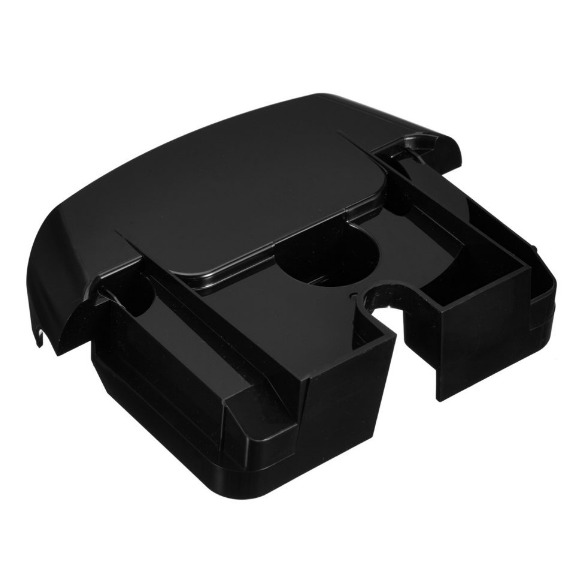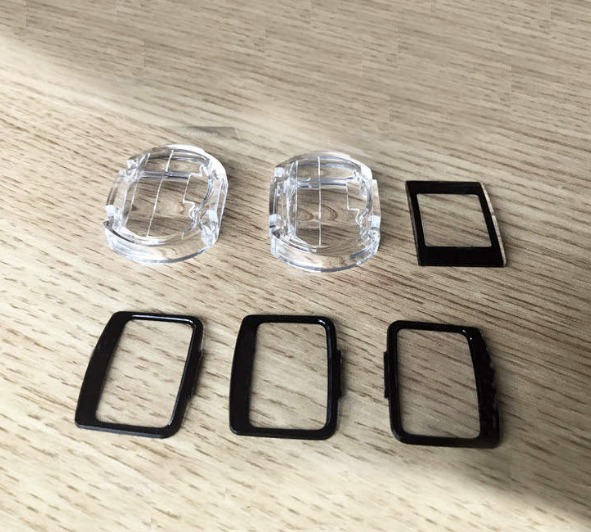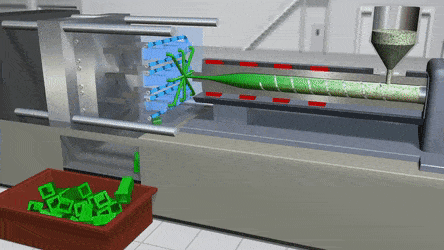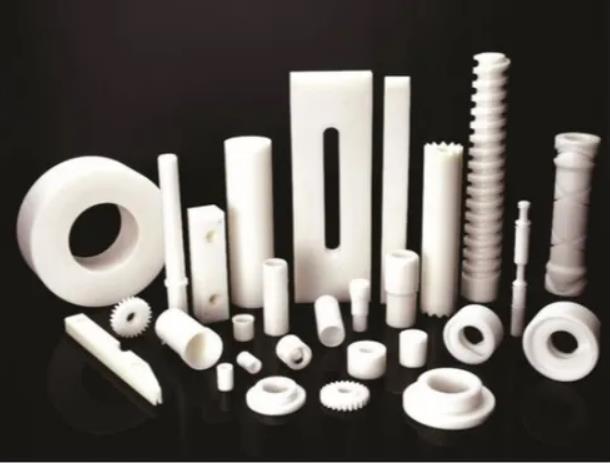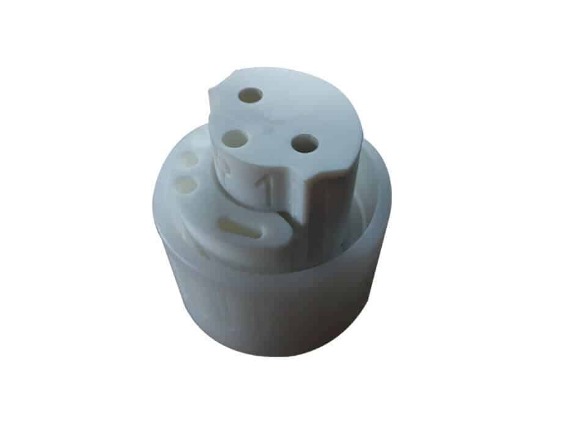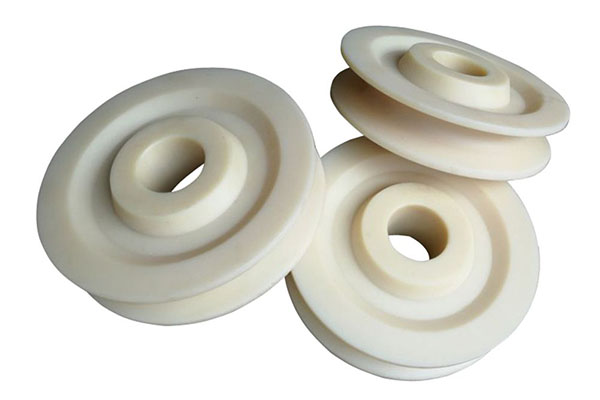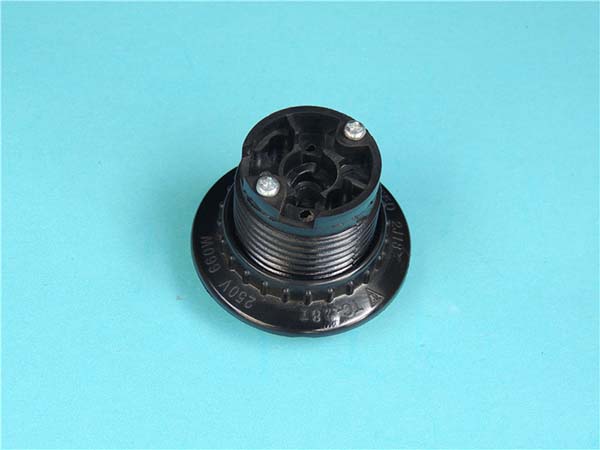Understanding Injection Molding Short Shots
In injection molding, achieving a perfect product is the ultimate goal. However, one common and frustrating issue that manufacturers often encounter is Injection Molding Short Shots. But what exactly are they?
Definition
A short shot in injection molding occurs when the molten plastic material fails to completely fill the mold cavity during the injection process. As a result, the final product is incomplete, with parts of the intended shape missing or under - formed. This can present as a visibly incomplete product, with areas that appear empty or have a rough, unfinished texture. For example, if you're molding a plastic toy with a complex shape, a short shot might result in one of the toy's appendages being only partially formed or completely absent.
Impact on Product Quality
Short shots have a direct and negative impact on product quality. Incomplete filling means that the product may not meet the required dimensional specifications. This can lead to issues when the product is assembled with other components. For instance, in the production of electronic device housings, a short shot could cause misalignment of the housing parts, making it impossible to properly fit the internal components. Moreover, the structural integrity of the product is compromised. Areas with insufficient material are weaker and more prone to breakage under normal use or stress testing.
Impact on Production Efficiency
From a production - efficiency perspective, short shots are extremely costly. Every short - shot product is essentially a waste of raw materials, energy, and machine time. If a significant number of short - shot products are produced, it means more resources are being used to manufacture defective items rather than high - quality, sellable products. This not only increases production costs but also reduces the overall output of good - quality products. For example, if a production line is set to produce 1000 plastic parts per hour, but due to short - shot issues, 200 of those parts are defective, the actual production rate of usable parts is reduced by 20%, and the company has to spend extra time and money to identify and discard the defective products. In addition, repeated short - shot problems may require frequent machine adjustments and troubleshooting, further disrupting the production flow and reducing the overall efficiency of the injection - molding process.
Common Causes of Injection Molding Short Shots
1. Insufficient Material Flow
Material flow is crucial in injection molding, and when it's insufficient, short shots are likely to occur. The material's inherent properties play a significant role. For example, materials with high viscosity, such as some high - performance engineering plastics like polyphenylene sulfide (PPS), have lower natural flowability compared to more common plastics like polyethylene (PE). In a study, when processing PPS at a standard injection temperature of 300°C, the flow length in a simple mold cavity was measured to be only 50 - 60% of that of PE processed at 200°C under the same injection pressure and time conditions.
Temperature also has a direct impact on material flow. As the temperature of the molten plastic increases, its viscosity decreases, and flowability improves. Generally, for most thermoplastics, a 10 - 15°C increase in melt temperature can lead to a 10 - 20% increase in flow length. However, if the temperature is too high, it can cause material degradation. Pressure is another key factor. A lack of sufficient injection pressure means the molten plastic can't overcome the resistance in the mold and reach all areas of the cavity. For instance, in a complex - shaped mold with multiple thin - walled sections, an injection pressure of less than 80 MPa might result in short shots, while increasing the pressure to 100 - 120 MPa could ensure complete filling.
2. Improper Gate Design
The gate is the passage through which the molten plastic enters the mold cavity, and its design is critical. If the gate size is too small, it restricts the flow of the plastic. For example, in a mold for manufacturing small plastic components, when the gate diameter was set at 0.8mm for a relatively viscous plastic material, short shots occurred in 70% of the production runs. However, when the gate diameter was increased to 1.2mm, the short - shot rate dropped to 20%. The following table shows the relationship between gate size and short - shot probability for different plastic materials in a specific mold design:
| Gate Size (mm) | Short - Shot Probability for Material A (%) | Short - Shot Probability for Material B (%) |
| 0.8 | 70 | 65 |
| 1.0 | 50 | 45 |
| 1.2 | 20 | 15 |
Gate location also matters. If the gate is placed in an area where the plastic has to travel a long and tortuous path to fill the entire cavity, short shots can occur. For example, if the gate is located at one end of a long, thin - walled mold cavity instead of at the center or a more strategic position, the plastic may cool down and solidify before it reaches the far - end of the cavity, resulting in short shots.
3. Air Trapping
Air trapping, or the presence of air that can't escape from the mold cavity during injection, is a common cause of short shots. When the molten plastic enters the mold, it displaces the air inside. If there's no proper way for the air to escape, it gets trapped. The formation mechanism is as follows: in a mold with complex geometries or insufficient ventilation, as the plastic flows in, it pushes the air towards areas with the least resistance. In some cases, the air gets compressed in small pockets. For example, in a mold with deep recesses or sharp corners, air can become trapped in these areas.
A real - world example is in the production of plastic toy parts with intricate internal structures. Due to the complex design of the mold, air was trapped in the internal cavities. As a result, short shots were frequently observed, with the parts having missing sections in the areas where the air was trapped. This not only affected the appearance of the toys but also made them non - functional as the missing parts were crucial for the toy's assembly or playability.
Several issues with the injection - molding machine can lead to short shots. One common problem is a slow injection speed. If the injection speed is too low, the molten plastic has more time to cool down during its journey through the mold. For example, for a medium - sized plastic part, an injection speed of less than 30 mm/s can result in a 40% chance of short shots. As the injection speed is increased to 50 - 60 mm/s, this probability drops to around 10 - 15%.
Another machine - related issue is a worn - out screw. A worn - out screw can't effectively convey and compress the plastic material. As the screw wears, the amount of plastic it can push forward per rotation decreases. In fact, a screw with 20% wear can reduce the plastic - conveying capacity by about 15 - 20%, leading to insufficient plastic reaching the mold cavity and causing short shots. The following graph shows the relationship between equipment - related issues (specifically injection - speed - related and screw - wear - related) and the frequency of short - shot occurrences:
[Here you can insert a simple bar graph with the x - axis labeled as "Equipment Issues" (with two sub - categories: Low Injection Speed and Worn - out Screw) and the y - axis labeled as "Short - Shot Frequency (%)"]
Low injection speed shows a high short - shot frequency, say around 40%, while a worn - out screw shows a slightly lower but still significant short - shot frequency, around 30%.
Effective Solutions to Injection Molding Short Shots
Now that we've identified the common causes of injection - molding short shots, let's explore some effective solutions.
1. Material Adjustment
Temperature Adjustment: As mentioned before, temperature has a significant impact on material flow. For most thermoplastics, raising the material temperature within a safe range can improve its flowability. Generally, increasing the melt temperature by 10 - 20°C can be an effective starting point. For example, if the initial melt temperature of a polyethylene - based material is set at 200°C and short shots are occurring, raising it to 210 - 220°C might solve the problem. However, it's crucial to monitor the material closely as excessive temperature can lead to degradation. Some materials, like polycarbonate (PC), start to degrade if the temperature is raised too high, usually above 320 - 330°C for common grades.
Material Substitution: If adjusting the temperature doesn't solve the short - shot problem, consider using a material with better flowability. For instance, if you're currently using a high - viscosity grade of a particular plastic, switching to a lower - viscosity grade of the same material family can make a significant difference. In a case where a company was experiencing short shots while using a high - viscosity grade of polypropylene (PP) for a complex - shaped part, changing to a lower - viscosity PP grade reduced the short - shot rate from 30% to less than 5%. When choosing a substitute material, make sure it still meets the product's mechanical, chemical, and other performance requirements.
2. Gate Design Optimization
Size Optimization: Determining the correct gate size is crucial. A general rule of thumb is that for a simple - shaped mold with a medium - viscosity plastic, the gate diameter should be around 1 - 1.5% of the largest part dimension. For example, if the largest dimension of the plastic part is 100mm, the gate diameter could be 1 - 1.5mm. However, this needs to be adjusted based on the specific material and mold complexity. In a real - world project, a company was producing plastic caps with a short - shot issue. By increasing the gate diameter from 0.8mm to 1.2mm, the short - shot rate decreased from 40% to 10%.
Location and Number: The gate location should be carefully chosen to ensure the plastic can flow evenly throughout the mold cavity. For a long, rectangular - shaped part, placing the gate at one of the short ends might lead to short shots at the far - end. Instead, placing the gate at the center of one of the long sides can improve the flow. Additionally, for complex - shaped molds or parts with large surface areas, using multiple gates can be beneficial. A case study of a large - sized plastic panel showed that when the number of gates was increased from one to three, the short - shot problem was completely eliminated, and the product quality improved significantly.
3. Venting Improvements
Exhaust Grooves: One of the simplest ways to improve venting is to create exhaust grooves in the mold. These grooves should be located at the areas where air is most likely to be trapped, such as at the end of the flow path or in areas with complex geometries. The depth of the exhaust grooves is typically in the range of 0.02 - 0.04mm, and the width can be 5 - 10mm. For example, in a mold for manufacturing a plastic housing with internal ribs, adding exhaust grooves with a depth of 0.03mm and a width of 8mm at the end of the rib - filled areas reduced the short - shot rate from 35% to 15%.
Breathable Steel: Another effective solution is to use breathable steel in the mold. Breathable steel has tiny pores that allow air to escape while preventing the molten plastic from seeping through. The porosity of breathable steel is usually in the range of 1 - 5% by volume. When a company started using breathable steel in a mold for producing intricate plastic components, the short - shot problem was almost completely resolved, and the production efficiency increased due to fewer defective products.
4. Machine Maintenance and Parameter Tuning
Regular Maintenance: Regularly maintaining the injection - molding machine is essential. This includes checking and replacing worn - out parts such as the screw, barrel, and seals. A worn - out screw can lead to inconsistent plastic conveyance, while a leaky seal can cause pressure loss. For example, replacing a worn - out screw that had 30% wear in an injection - molding machine reduced the short - shot rate from 25% to 5% as it improved the plastic - conveying efficiency.
Parameter Adjustment:
- Injection Speed: Adjusting the injection speed can have a significant impact on short shots. If the injection speed is too low, the plastic cools down too much before filling the mold. For a medium - sized plastic part made of ABS, increasing the injection speed from 30 mm/s to 50 mm/s can reduce the short - shot probability from 30% to 10%. However, be cautious as too high an injection speed can cause other issues like flash or jetting.
- Injection Pressure: Increasing the injection pressure can help the plastic overcome the flow resistance and fill the mold completely. As a general guideline, start by increasing the injection pressure by 10 - 20% if short shots are occurring. For example, if the initial injection pressure is 80 MPa, increasing it to 88 - 96 MPa might solve the short - shot problem. But be careful not to exceed the machine's maximum pressure capacity and the mold's pressure - resistance limit.
Yigu Technology's Perspective
As a non - standard plastic metal products custom supplier, Yigu Technology has rich experience in dealing with injection - molding short shots.
In mold design, Yigu Technology's team of experts conducts in - depth flow analysis using advanced software before starting the mold - making process. For example, when designing a mold for a complex - shaped plastic part, they simulate the plastic flow in the mold cavity to identify potential areas of short shots. Based on the analysis results, they optimize the gate design, carefully determining the gate size, location, and number. This proactive approach helps to prevent short - shot issues from the very beginning of the production cycle.
Regarding material selection, Yigu Technology not only focuses on the basic performance requirements of the product but also pays close attention to the material's flowability. When a customer requests a specific material that may have flow - related challenges, Yigu Technology's material experts will recommend alternative materials with better flow properties while still meeting the product's functional needs. They also ensure that the raw materials are of high quality and properly dried to avoid issues caused by moisture or impurities.
In terms of production - process control, Yigu Technology has a strict maintenance schedule for its injection - molding machines. Regular inspections and replacements of worn - out parts ensure stable machine performance. Their operators are highly trained to accurately adjust the injection - molding parameters according to the product requirements. For instance, when a new product is in the trial - production stage, the operators will closely monitor the injection process, making real - time adjustments to parameters such as injection speed, pressure, and temperature to eliminate short - shot problems. Through these comprehensive measures, Yigu Technology effectively helps customers solve short - shot problems, significantly improving product quality and production efficiency.
